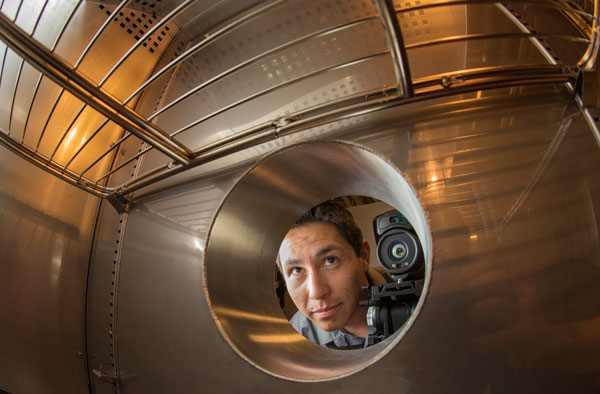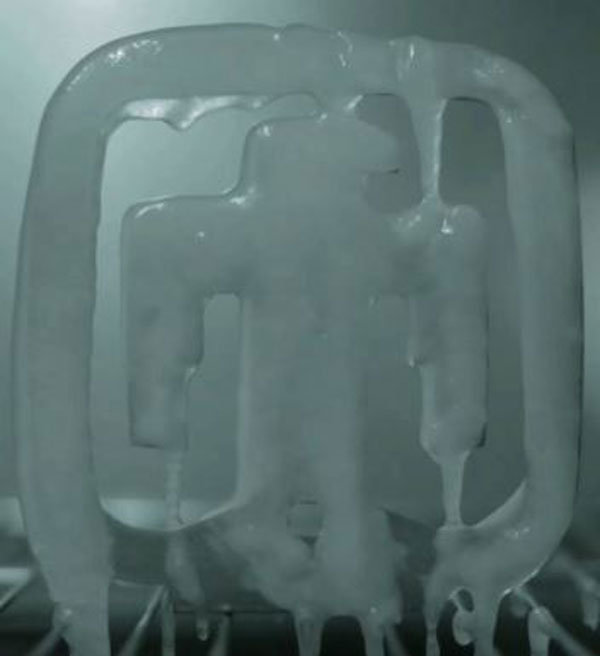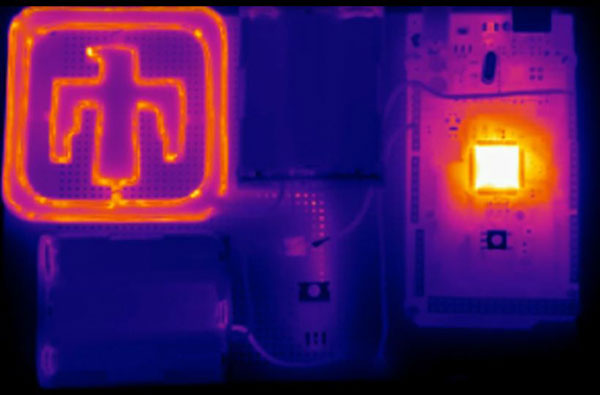Climatic lab welcomes new method to monitor thermal stress
Though Duracell batteries are “Trusted Everywhere,” nothing quite compares to the diverse environments in which Sandia’s nuclear weapons systems and components must survive. Testing these components and ensuring their reliability in the harshest environments is the job of the people and tools at the non-destructive environmental testing lab.
Late last year, one of those facilities, the climatic lab, welcomed a new tool that should give them a clearer idea of what is happening during testing. Their new infrared camera and movable, magnetic IR-transparent window can provide a more complete data set than by a few strategically placed thermocouples. The combination is particularly useful for monitoring live electrical components during climatic testing.
The window is made of a new commercially available polymer that is mostly transparent to IR radiation. Five years ago, IR-transparent windows were made of crystals such as sapphire or zinc selenide, which can be incredibly expensive for a six-inch diameter window, says Eric Hicks, a climatic lab technician who led the development of the capability.

Climatic lab simulates many ‘normal’ environments in Tech Area 1
The climatic lab specializes in subjecting components to the kind of environments expected during a normal lifetime — long-term storage in a humid and corrosive locale, transportation through freezing outer space or broiling weather and the environment of intended use.
The climatic lab has more than 20 environmental chambers. The IR window and camera can be used on nearly all of them. Miguel Atencio, climatic test engineer says, “That’s the beauty of what Eric came up with. It’s very adaptable and can be set up almost anywhere in the lab.”
The climatic lab can expose parts temperatures from -106 to 350 degrees Fahrenheit for days or months at a time. They can also simulate temperature shock by subjecting components from -106 to 350 degrees, or vice versa, in only eight seconds, simulating re-entry or other abrupt temperature changes.

The team can conduct numerous standardized corrosion tests as well as subject parts to low pressure environments, mimicking heights above the stratosphere. Though most of their testing chambers are close to oven sized to accommodate components or subsystems, the lab does have one walk-in chamber that can test a full system or other objects weighing several thousand pounds. It is 16 feet deep, 9 feet wide and 8 feet tall.
Watch the YouTube here:
IR camera and window provides more data
“Many of our customers will bring us a circuit board and want to know how a tiny electrical component responds to a certain environment while the device is being tested. The problem is, a thermocouple is about the same size as the component and can act like a heatsink to perturb our measurements,” says Eric.

As an alternative, the IR camera can provide pixel-by-pixel tracking of how the part responds to the environment, without introducing these effects. Miguel says, “This capability allows us to give the customer a better idea of what is happening during a test. Our goal is to use thermal imaging to compliment thermocouple data so that they can better understand how their product is responding.”
Eric’s first use of the IR camera and IR-transparent window, which took place when he was a summer intern, involved testing the thermal response of a gadget he made in college. At about 200 degrees Fahrenheit, the commercial battery that powered the gadget started to ooze and put off a lot of heat.
Eric says, “We could actually watch it heat up and identify the area that was starting to cause the issue. We could see the battery failing, which we never would have caught with just a thermocouple.”
Such comprehensive monitoring also has a role in safety. Miguel adds, “We’re definitely going to start using this capability in ways that will allow us to determine if a product is starting to misbehave. We’ll be able to shut a test down before it gets dangerous.” Even without a catastrophic failure, the information provided by the IR system can help engineers identify problem areas or components that might need to be redesigned so they don’t fail in the field.
Hitting a ‘moving target’ by adding new capabilities
The big challenge for adding this new system to the climatic lab’s capabilities was combining two commercial, off-the-shelf devices to best meet the needs of their customers, said Miguel. However, he adds, it’s not useful for every test. The surfaces of some components may emit or reflect IR light, which will influence the camera’s readings. Other components composed of a homogeneous material can easily be measured with thermocouples alone.
In addition, Eric says, the IR camera can aid the team by quickly determining hotspots on a component, which would help them determine the best places for thermocouple location.
Miguel says, “We’ve made a dedicated effort to modernize the climatic lab and increase our capabilities. We’ve been working to better understand our customers’ needs, but it’s a moving target. We are doing our best to stay ahead of the curve and anticipate the needs ten years out. It is an ongoing challenge we enjoy.”